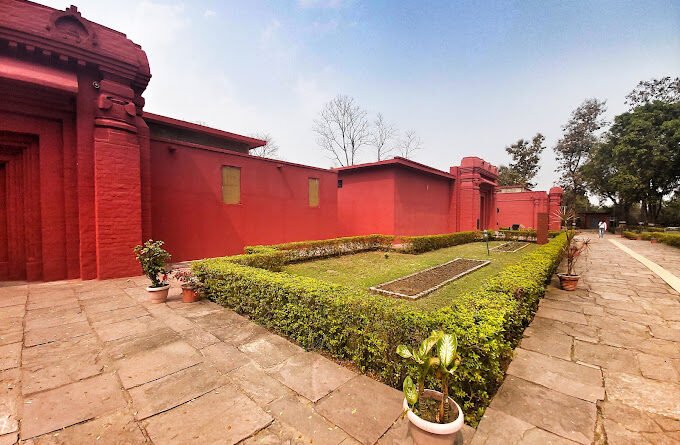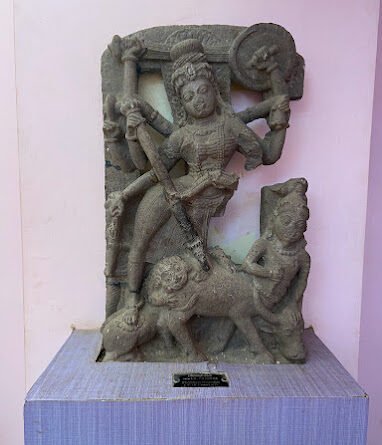Kharod Shiv Mandir/Laxman Temple Kharod,Chhattisgarh
Sirpur Group of Monuments are an archaeological and tourism site containing Hindu, Jain and Buddhist monuments from the 5th to 12th centuries in Mahasamund district of the state of Chhattisgarh, India. Located near an eponymous village, it is 78 kilometres (48 mi) east of Raipur, the capital of the state. The site is spread near the banks of the river Mahanadi.
The town of Sirpur (aka Shirpur) has been mentioned in epigraphic and textual records dated to the 5th to the 8th centuries CE. The city was once the capital of the Sharbhapuriya and Somavamshi kings of Dakshina Kosala state. It was an important Hindu, Buddhist and Jain settlement of the South Kosala kingdom between the 5th and the 12th century CE. It was visited by Hieun Tsang, the 7th century Chinese Buddhist pilgrim. Recent excavations have uncovered 12 Buddhist viharas, 1 Jain vihara, monolithic statues of Buddha and Mahavira, 22 Shiva temples and 5 Vishnu temples, Shakti and Tantric temples, underground granary market and a sixth-century bath house.
History
Sirpur relief excavated: she steps on his feet, seeks forgiveness with a namaste gesture.
Sirpur, also referred to as Shripur and Sripura (literally, “city of auspiciousness, abundance, Lakshmi”) in ancient Indian texts and inscriptions, is a village on the Mahanadi River 78 kilometres (48 mi) east of Raipur. Allahabad Pillar inscription dated 4th century AD mentions Sirpur as Sripura. In the second half of the 1st millennium CE, it was the capital city with major commercial and religious significance for the Dakshina Kosala kingdom. The earliest documented evidence states that it was first a capital of Sharabhapuriya dynasty, followed by Panduvamshi dynasty. The Sharabhapuriya dynasty itself is dated to the late 5th century CE, but inscriptions mention its first capital to be Sharabhapura, as yet an unknown site.
The abundant inscriptions of the mid-6th century CE in the region mention the Hindu Shaiva king Teevardeva and 8th-century king Shivagupta Balarjuna establishing temples and monasteries for Hindus, Buddhists and Jains in his kingdom. The Chinese pilgrim and traveller Huen T’sang mentions visiting Sirpur in 639 CE in his memoirs. He wrote that the king was a Kshatriya and benevolent to the Buddhists, the region was prosperous. According to his memoir, some 10,000 Mahayana Buddhist bhikshus (monks) lived here in some 100 monasteries, and there were over 100 temples.
The earliest dated Sirpur monument is the Lakshmana temple, dated to 595-605 CE. Along with it, numerous other temples along the Mahanadi River stretching over 150 kilometres (93 mi) from Rajim to Kharod have been located and dated to between 600 and 710 CE.
The South Kosala kingdom, along with the capital Sirpur, was taken over by the Kalachuri dynasty in the 11th century, with eastern parts of the South Kosala taken over by the Somavamshi kingdom to their east. The 12th century and 13th century history of the region is unclear. Excavations in the region have yielded layers of deposits, traceable from the mid 1st millennium BCE, the Gupta Empire period, through the late medieval period with the youngest layer of deposits being ruins mixed with chilum (smoke pipe) and Sultanate era coins suggesting that Sirpur was an active human settlement at least through the early Delhi Sultanate.
















